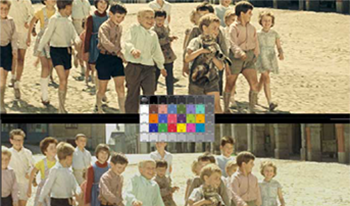
The main required parameter of digital restoration is to preserve the original appearance of the restored film as it was presented at its première screening. However, there are two different approaches in looking at the nature of cinematic arts which in turn influence the preference of the master sources. The first one views the film as a preserved analogue archival material while the other views it as a live performance. The main premise of Method of Digital restored Autorizate (DRA) is to work with image scans taken at the highest resolution using the original film negatives, and to try to recreate the original appearance of the film performance through subsequent digital restoration. In contrast, there is a method recommended by FIAF to work preferentially with second-generation scans of positive copies of films and to maintain the appearance of preserved archival material. This paper analytically compares the results of both methods and draws attention to a very important parameter – the structure of the film image. It advocates the perception of film grain as one of the basic building blocks of film image formation. The result of the practical comparison is presented.
Marek Jicha, "Issues Concerning the Use of Duplication Positives in Digitizing Analogue Films" in Archiving Conference, 2022, pp 72 - 77, https://doi.org/10.2352/issn.2168-3204.2022.19.1.15
 Find this author on Google Scholar
Find this author on Google Scholar Find this author on PubMed
Find this author on PubMed